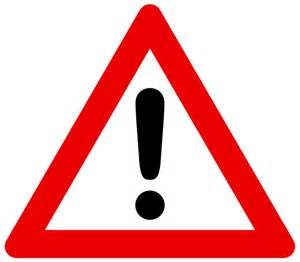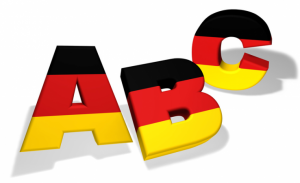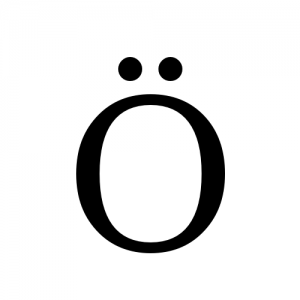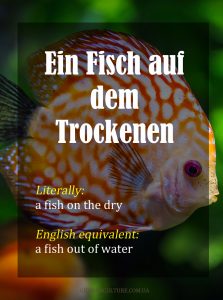"Every noun has a gender, and there is no sense or system in the distribution; so the gender of each must be learned separately and by heart. There is no other way. To do this one has to have a memory like a memorandum-book." - Mark Twain, The Awful German Language Indeed, in German, there are two indefinite articles (ein, eine) and three … [Read more...]
Satzzeichen – German Punctuation Marks
An essential part of learning to write in German is learning how to properly use German punctuation - a system of marks or signs that are placed in a text to clarify meaning and separate structural units. Luckily, German punctuation is similar to English punctuation in many respects. However, four of these German punctuation marks - … [Read more...]
Meet German Prepositions!
Prepositions are words that link a noun to the rest of the sentence. They usually tell you about time, place and direction. Examples of English prepositions include on, out, under, from, with, about and until, but there are many more. They are those little words that you don’t even notice you’re using, but which completely change the meaning of the … [Read more...]
German Idioms – Part 4
Concluding our series, Part 4 presents the final batch of German idioms that encapsulate the language's charm and expressiveness. From “Es ist mir Wurst” to “Lügen haben kurze Beine,” these phrases offer a glimpse into German humor and pragmatism. Dive in to complete your idiomatic journey. Sich freuen wie ein Schneekönig Literally: to be as merry … [Read more...]
German Pronunciation
When you first start learning about German pronunciation, it can be intimidating. There are a lot of myths about the German language. People talk about how difficult and ugly it is, and how different it is from languages like English. But many people don't realize that English is actually a Germanic language! That’s why so many words and sounds are … [Read more...]
8 Facts About the Umlaut
The German alphabet consists of 26 characters plus 3 umlauts: ä, ö and ü. The two dots above the letters do not indicate an accentuation or emphasis of the syllable (as for instance accent-bearing letters in Spanish or French). Umlauts are used as independent characters in the German language. Whenever the use of umlauts is not possible (e.g. … [Read more...]
German Adverbs
Similar to English, German adverbs are words that modify verbs, adjectives or other adverbs. They are used to indicate a place, time, cause, and manner, and they can be found in various parts of a sentence. Adverbs are divided into four main groups: Adverbs of Place Adverbs of Time Adverbs of Manner and Degree Adverbs Indicating … [Read more...]
German Idioms – Part 3
In Part 3, we delve deeper into German idioms that offer insights into the nation's mindset and values. Expressions such as “Den Nagel auf den Kopf treffen” and “Sich zum Affen machen” not only enrich your vocabulary but also provide a window into German culture. Let's explore these sayings and their everyday applications. Wo sich Fuchs und Hase … [Read more...]
German Idioms – Part 2
Building upon our previous exploration, Part 2 introduces more German idioms that showcase the language's richness and humor. Phrases like “Die Kirche im Dorf lassen” and “Da steppt der Bär” reveal cultural nuances and everyday wisdom. Join us as we unpack these expressions and their relevance in modern German. Er muss zu allem seinen Senf … [Read more...]
German Idioms – Part 1
German idioms are an integral part of daily communication, adding color and depth to the language. In this first installment, we delve into expressions that might baffle non-native speakers but are second nature to Germans. From “Da liegt der Hund begraben” to “Ich verstehe nur Bahnhof,” explore the literal translations and the stories behind these … [Read more...]
- « Previous Page
- 1
- …
- 3
- 4
- 5
- 6
- Next Page »









